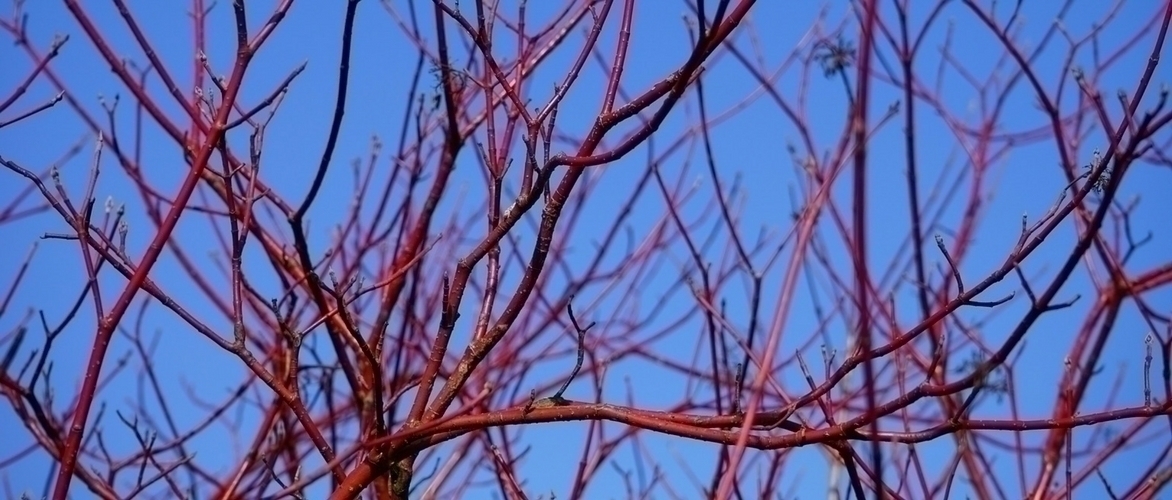
Decorative wood dogwoods: 9 pairing ideas
elegant in all seasons
Contents
Essential in water gardens or contemporary settings, decorative dogwoods (Cornus alba, Cornus stolonifera, C. sericea, C. sanguinea) thrive in sunny or partially shaded borders, in country hedges, in mixed borders, or in cool rockeries. They guarantee a spectacle for months, from late spring to the end of winter.
Modern, elegant, or natural, with striking punctuation or in a mix, these easy bushes integrate into all settings and contribute to various atmospheres: their compact and bushy habit allows them to fit in anywhere without disturbing their neighbours. Exceptionally robust, they are the perfect companions for more precious, delicate shrubs.
Coral red, blood red, mahogany, bright yellow, or green, mix their vibrant barks for high-colour compositions, highlight their luminous foliage with golden leaves, or play on contrasts to add depth to a backdrop of dark foliage. They help showcase other plants in borders, particularly winter flowers like daffodils, hellebores, or Christmas roses.
Let inspiration guide you by daring to create striking contrasts of red/white, complementary colours, or even soft or bold green shades.
By the water
Decorative wood cornels thrive by the water, reflecting their stems. If your garden has a pond or stream, you can plant a large number of decorative bark cornels to beautifully contain the banks and provide a vibrant splash of colour in winter. You might plant a Cornus stolonifera ‘Faviramea‘ with yellow bark, behind a foreground of Astilbes, for example, or alongside winter Horsetails: their upright and straight stems will add a very graphic touch with their black rings against a green background, echoing those of the cornels.
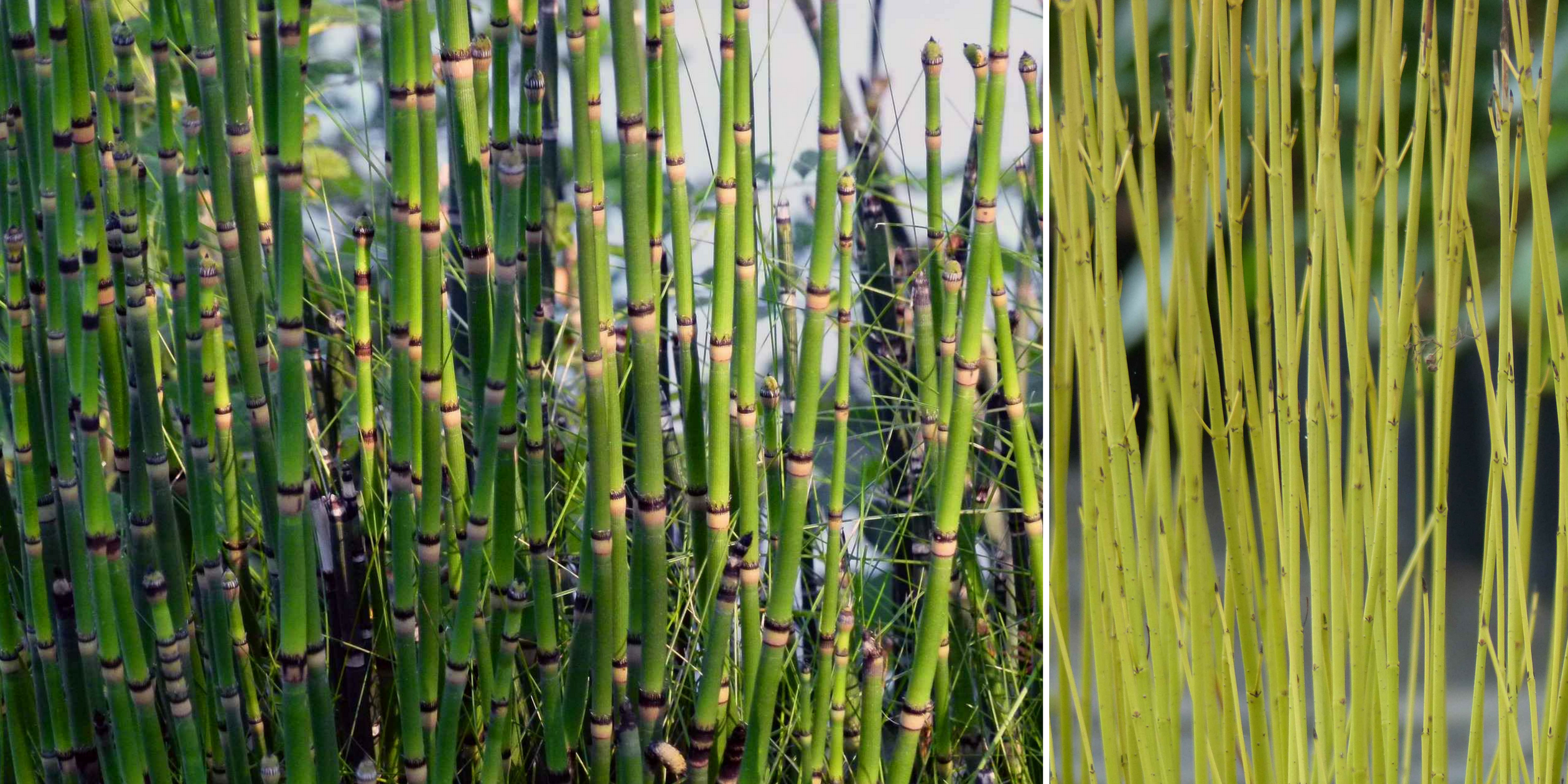
A Cornus stolonifera ‘Faviramea’ with yellow bark looks wonderful alongside winter Horsetails
In a free hedge for a striking effect
Although they bloom less than spring-flowering dogwoods, decorative bark dogwoods maintain a bushy habit and make excellent free-standing hedges throughout the year. From the heart of spring, the cream variegated leaves of the dogwood and the silver foliage of an Elaeagnus will brighten the whole area. They will combine with shrubs that have complementary attributes featuring remarkable spring flowering, such as the Japanese Quince ‘Eximia’, the evergreen foliage of Photinia fraseri ‘Corallina’, or the fragrance of Philadelphus. Very decorative berries will first appear white and turn blue by late summer. It is when everything is bare that they will astonish with the spectacular colour of their naked branches: coral red, mahogany, acid green, or bright red stems will warm up winter when paired with laurustinus and clumps of mugwort: evergreen shrubs that will provide a green counterpoint. Also consider pairing dogwoods with red or green smoke trees, Berberis, and spindle trees to create a dense and varied hedge.

Cornus alba ‘Sibirica Variegata’ – Cornus ‘Bâton Rouge’ – Photinia fraseri ‘Corallina’
Discover other Cornus
View all →Available in 0 sizes
Available in 0 sizes
Available in 2 sizes
Available in 1 sizes
Available in 2 sizes
Available in 1 sizes
Available in 3 sizes
Available in 2 sizes
Available in 2 sizes
Available in 3 sizes
To spotlight a flowerbed
Decorative dogwoods are perfect for serving as a focal point in the garden. They will add colour to your garden when other plants are in dormancy. They should be placed according to the spotlight you wish to create in spring, autumn, and winter. Opt for variegated varieties like Cornus alba ‘Sibirica Variegata’ to bring light and brighten up dark corners in spring and summer. With their changing foliage from spring to winter, from grey-green to pink-purple, they will complement and contrast beautifully with Azaleas, Pieris, or Rhododendrons. The Cornus sericea ‘Kelseyi’ will dress garden borders with a carpet of yellow-orange leaves in autumn and brightly coloured red-brown stems afterwards.
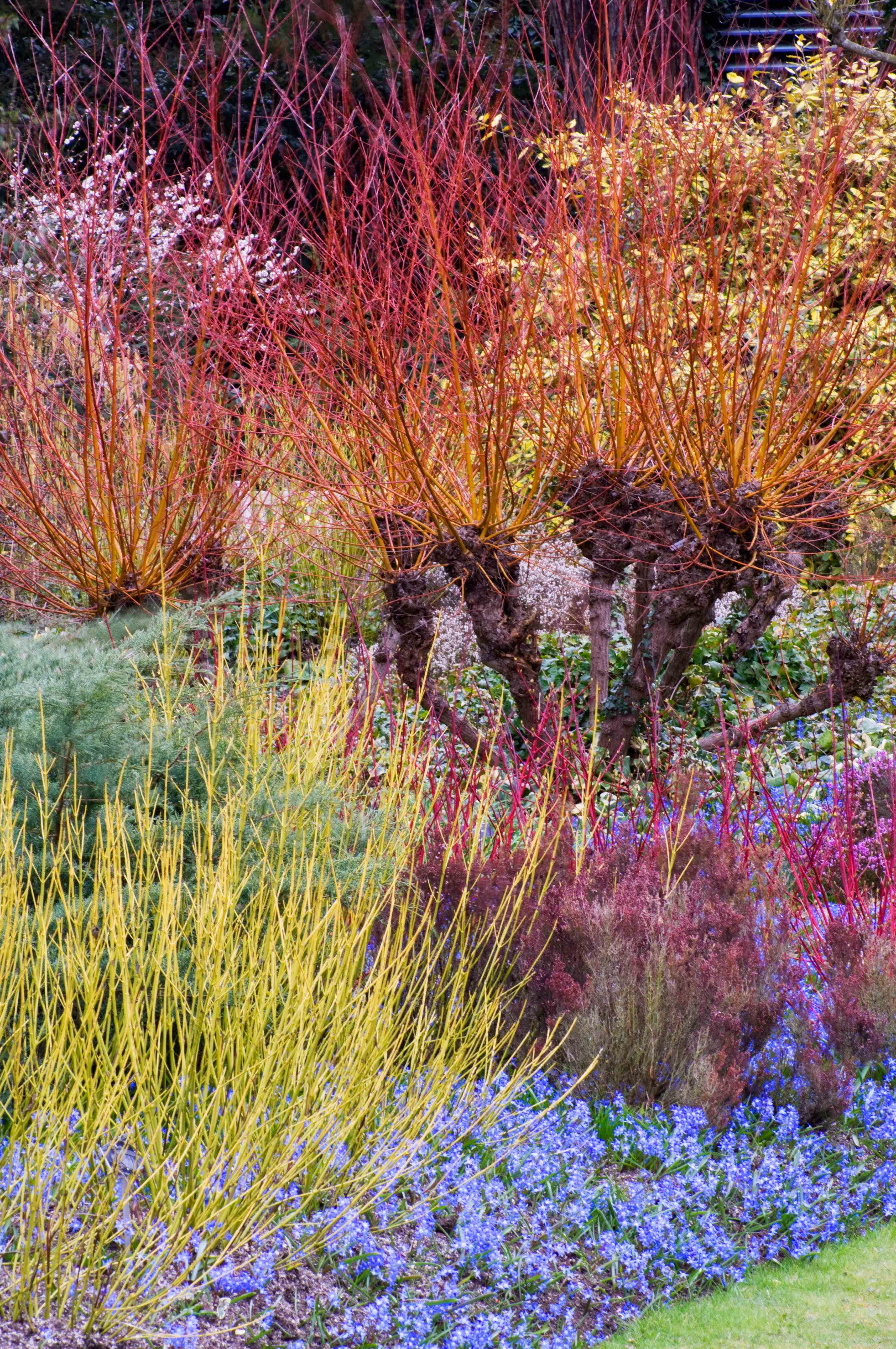
In the foreground of this winter bed, the golden wood of Cornus stolonifera Flaviramea contrasts with the blue flowers of Chionodoxa luciliae at the edge. In the background, the orange wood of basket willow (Salix viminalis) brightens the bed thanks to the variegated and evergreen leaves of Elaeagnus ‘Limelight’
Read also
Pruning cornus to maintain their coloursTo showcase the four seasons in a mixed border
They offer staggered appeal throughout the year. In spring, with numerous small bulbs blooming very early in the season (crocuses, daffodils, snowdrops, botanical tulips), followed by various perennials whose lush green or variegated foliage will serve as a backdrop. For a beautiful winter scene, plant the cornus with autumn chrysanthemums, hellebores, and a multitude of white, purple-pink, or lilac-pink snow heathers. They will create a tapetum on which the brightly coloured branches of a Cornus alba ‘Sibirica’ will stand out. The bare and upright forms of the dogwoods will introduce a striking punctuation that will break the uniformity of the heathers.

A tapetum of snowdrops and ophiopogon at the foot of the white dogwood ‘Siberian Pearls’ with red wood offers a striking contrast
Contrasting yellow/purplish blue scene
You will particularly highlight the green-yellow colour of the foliage of certain dogwoods in contrast with blue hues. In spring, we play with complementarity by placing the lemon-yellow foliage of a Cornus alba ‘Aurea’ next to large dark blue perennial plants, such as aconites, campanulas, delphiniums, a Rhododendron ‘Marcel Ménard’ with large round dark violet inflorescences, a Judas tree, or even a Nandina domestica ‘Obsessed Seika’ with purple foliage. Waving bouquets of lady’s mantle flowers placed at the front of a flower bed will enhance the green-yellow hue of a Cornus alba ‘Aurea’ set against a backdrop of other green-yellow leafed shrubs (barberries, golden willows). The ornamental effect of golden dogwoods can be increased by introducing perennials with yellow tones such as golden yarrow, cream astilbes, or golden yellow daylilies. For contrasting scenes, pair it with the dark violet of Dahlia ‘Vancouver’, the light mauve of asters, or the grey foliage of a blue centaurea.

Cornus alba ‘Aurea’ – Rhododendron ‘Marcel Ménard’ – Sacred bamboo – Delphinium –
In contrast with white and silver tones
Decorative bark dogwoods pair beautifully with other bushes that share the same qualities. The red stems of the Cornus alba will highlight the silvery white stems of winter brambles (Rubus cockburnianus and Rubus thibetanus) and Himalayan birches with snow-white bark. The Cornus alba ‘Kesselringii’ will be striking with its mahogany-red shoots in winter, very graphic. Also consider mixing them with the always-moving silver-grey foliage of white wood willows (Salix irrorata) or eucalyptus with almost metallic hues. They will look wonderful surrounded at their base by hellebores and snowdrops with immaculate whiteness.
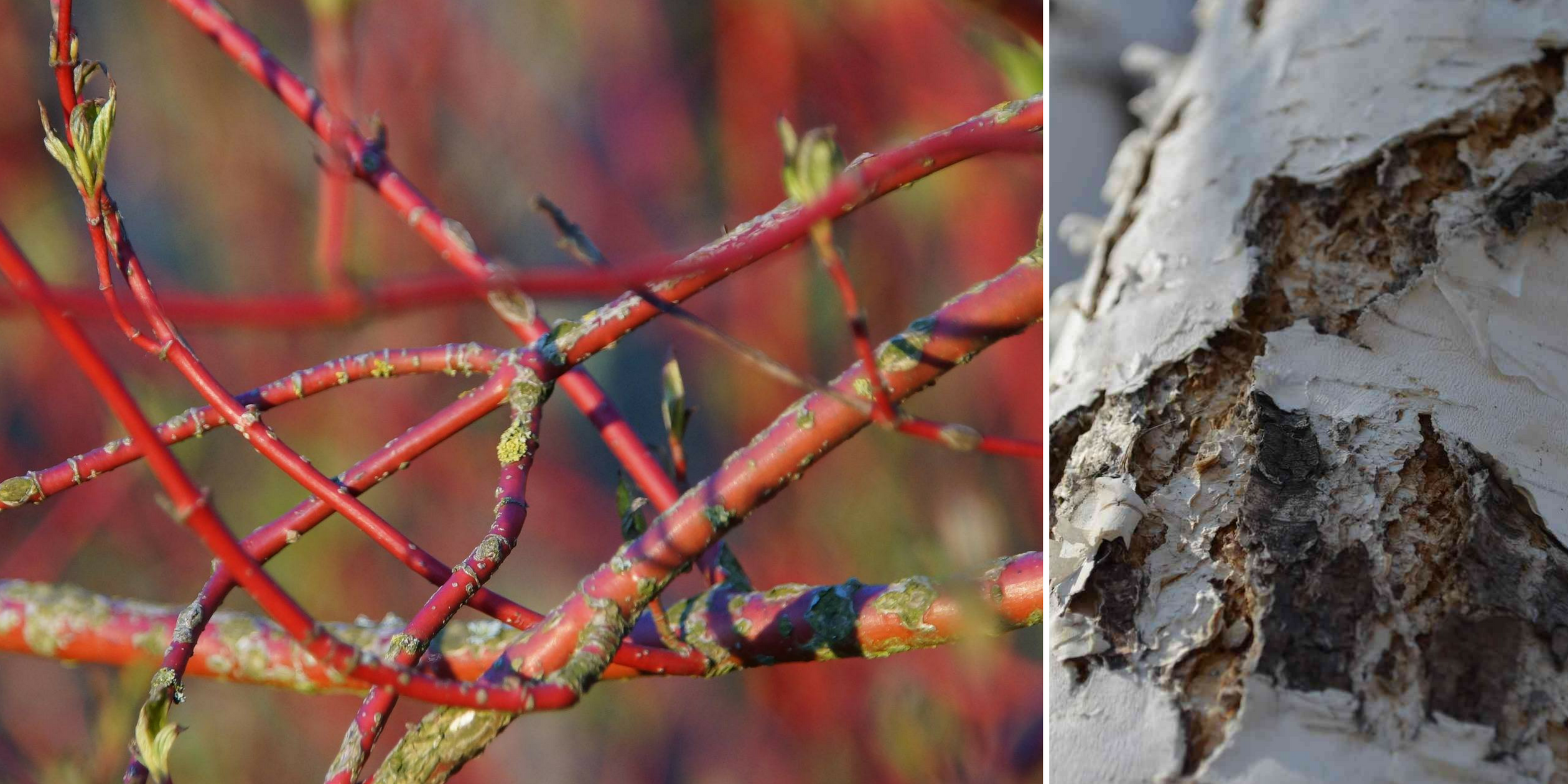
A contemporary variation with grasses
You can adopt a very contemporary tone thanks to the wise yet dynamic lines of decorative dogwoods. In a mass planting, the abundant company of grasses will bring a breath of modernity, lightness, and a lot of flexibility to the straight lines of the dogwoods. For a beautiful contemporary winter scene, the bright red stems will be spectacular when paired with the blonde reflections of the bulrush grass or pampas grass, along with the large light golden and silver inflorescences of tufted canches or with the coppery brown clumps of a Carex. With their flexible shapes, the grasses create very “natural” screens; in the background of a mass planting, they will serve as a link and a complement to the vividly coloured branches of the dogwoods.
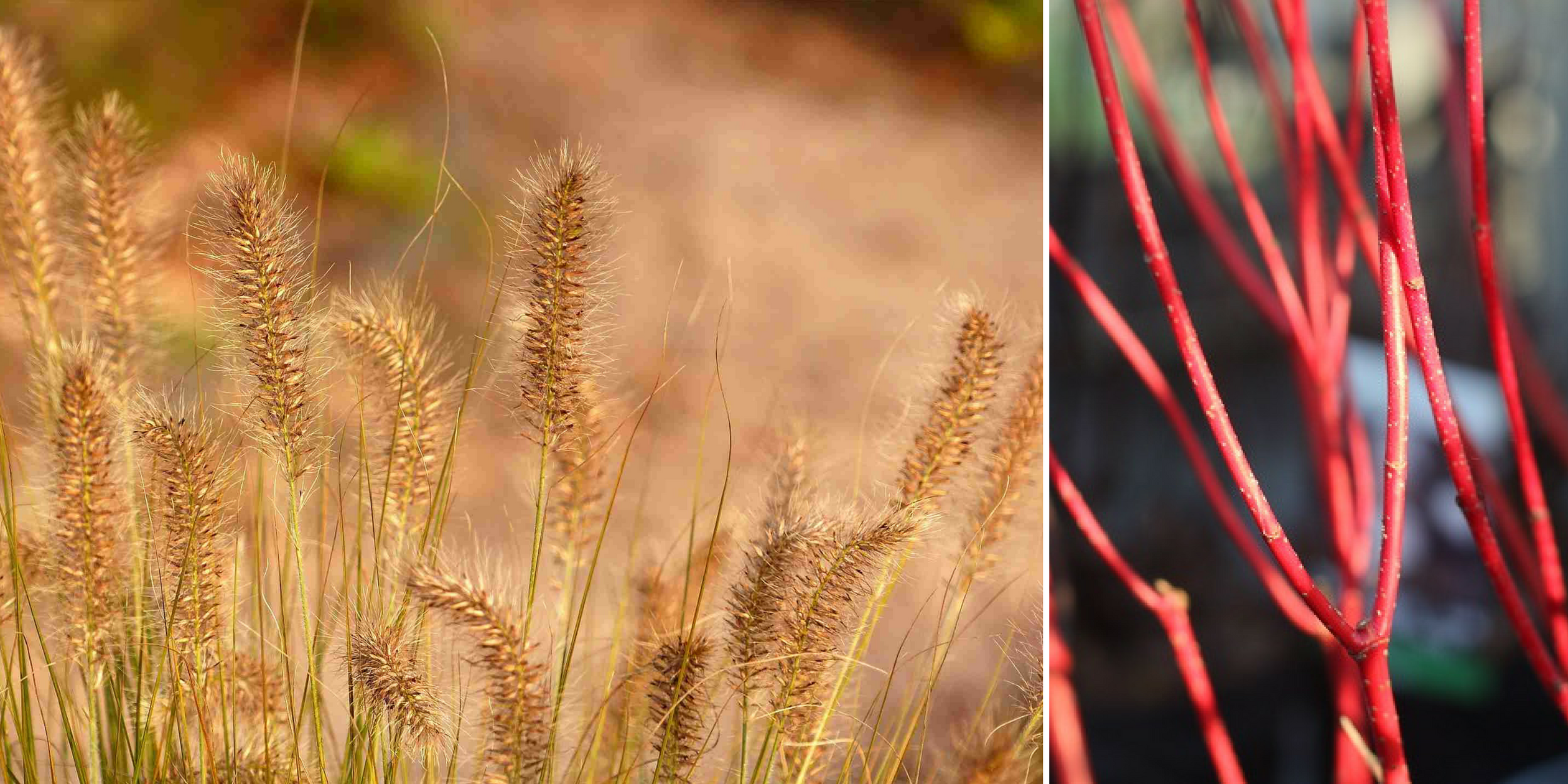
The bright red stems will be spectacular when paired with the blonde reflections of the bulrush grass
In a pot on a terrace
Cornel trees are very attractive on terraces, in long large containers for a mass effect. Daffodils, grape hyacinths, and crocuses can be planted at their base: they will bloom in spring through the wood. Pair them with a Pieris japonica ‘Forest Flame’, notable for its young red foliage that turns coral pink and then green in summer, a Japanese azalea, a cypress or a dwarf pine, or even a Japanese herb with green foliage in summer that turns bronze in autumn. And since they are pruned each year to encourage new coloured wood, they will maintain a size that is well-suited for pot cultivation.
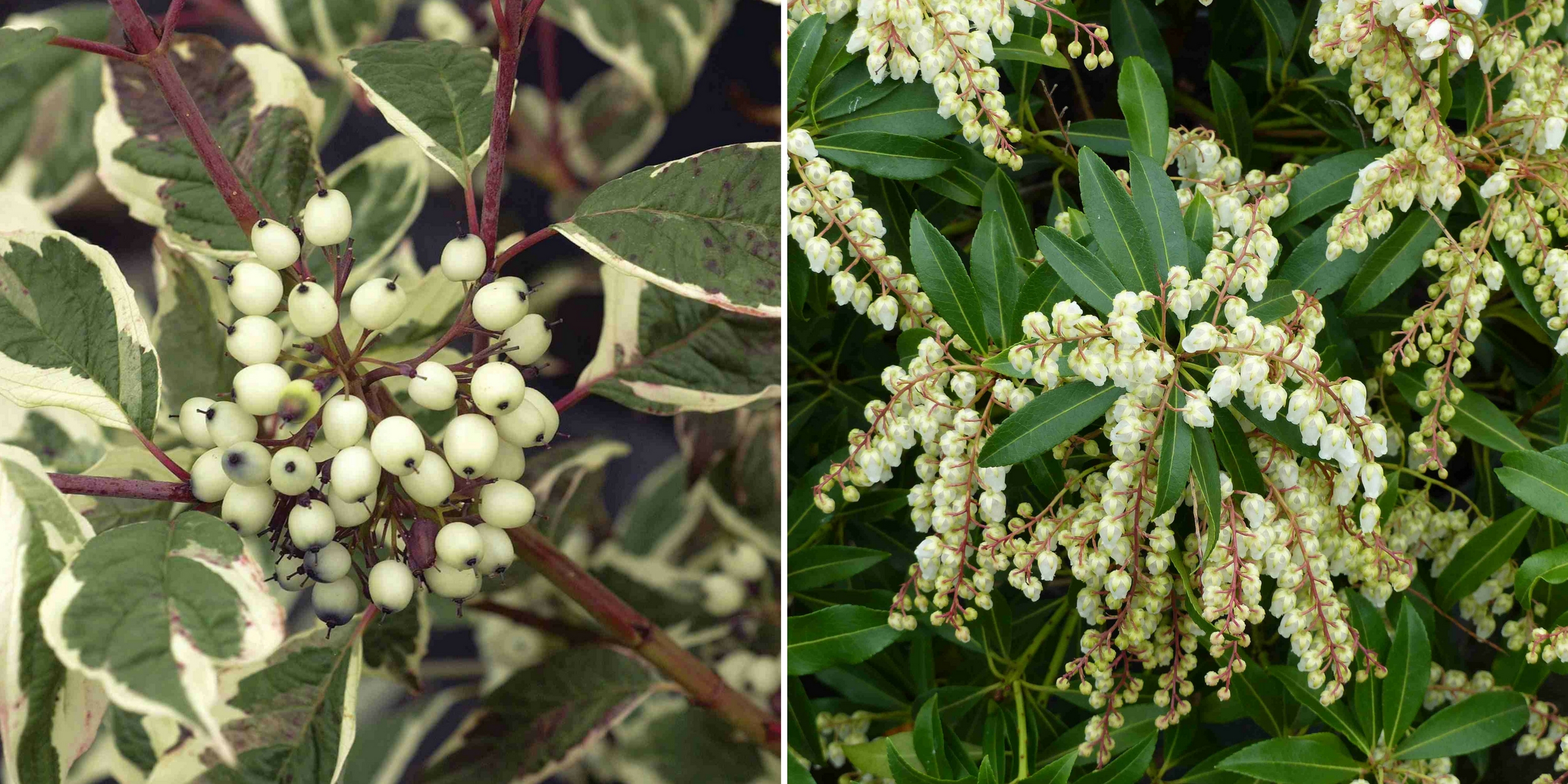
Cornus Alba Siberica Variegata – Pieris japonica ‘Forest Flame’ –
In a graphic bouquet
Do you love chic and natural decor? Keep the red or green branches of your dogwood to brighten up your interior! They structure bouquets, whether they have a rustic or very sophisticated look. They shine in floral arrangements that combine elegance and modernity, mixed with daffodils, forsythia, and hydrangeas. With eucalyptus leaves, they will create a natural bouquet without flowers. Dogwood stems are widely used in Japanese floral art (ikebana), where they add verticality and colour in combination with flowering cherry or almond branches, twisted hazels, and one or two beautiful flowers.
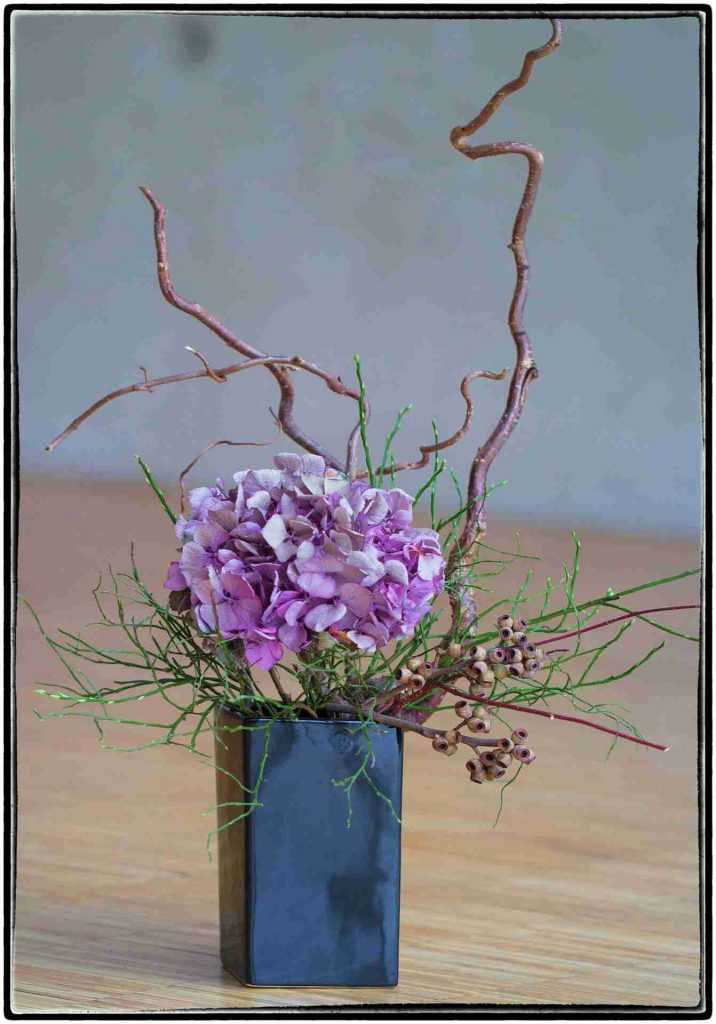
- Subscribe!
- Contents































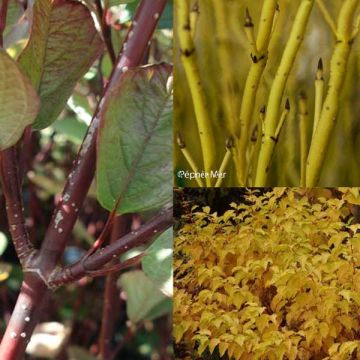
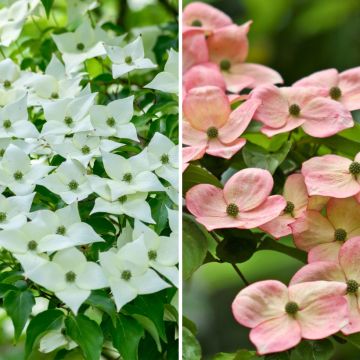
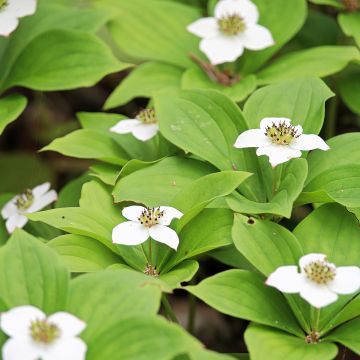
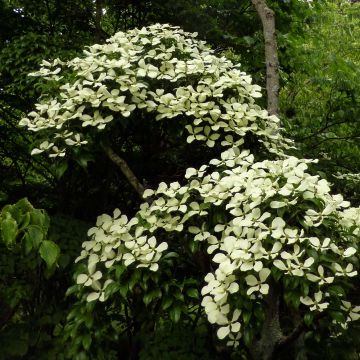
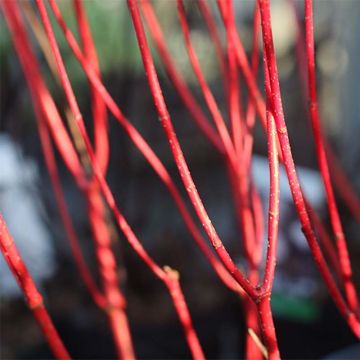
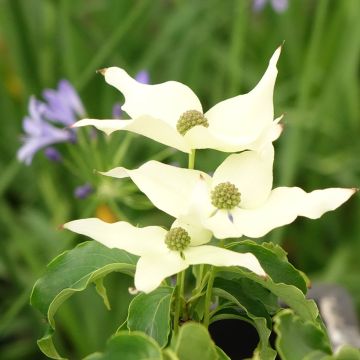
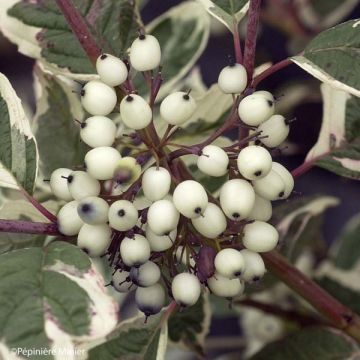
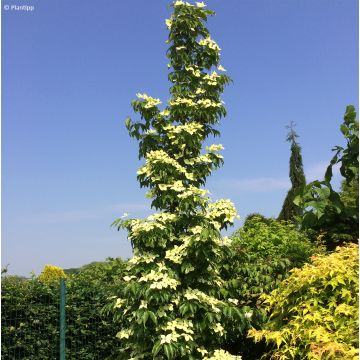

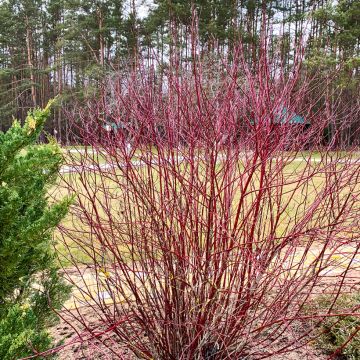
Comments